Trees on farms
Learn the benefits of integrating agroforestry, woodlot management, windbreaks and maple syrup production into your crop or livestock farm operation.
Introduction
Trees on farms provide many benefits for livestock, crops and pollinators. These range from soil protection to providing a food source. Windbreaks slow down damaging winds, provide shelter for livestock and woodlots provide income for farm owners.
Agroforestry
Agroforestry is the practice of integrating the growing of trees, crops and pasturing of livestock.
There are 4 major traits that distinguish agroforestry from farming and forestry practices. Collectively, they are called the “4I’s”:
- Intentional — tree, crop and/or animal combinations are purposefully designed and managed as a whole unit, rather than as separate elements
- Intensive — intensive management (for example annual cultivation, irrigation, fertilization) is required to maintain the productivity and protective benefits of agroforestry systems
- Interactive — the physical and biological interactions between tree, crop and/or animal components are actively and sustainably managed
- Integrated — tree, crop and/or animal components are managed as a single integrated unit
Benefits of agroforestry
There are many benefits to agroforestry:
- multiple harvestable components being produced at once
- increased carbon sequestration
- efficient land use
- reduced water pollution
- reduced wind and water erosion
- enhanced biodiversity
Agroforestry systems
There are 6 systems that Canada classifies as agroforestry:
- tree-based intercropping/alley cropping
- riparian buffers
- forest farming
- silvopasture
- biomass production systems
- windbreaks and shelterbelts
Tree-based intercropping/alley cropping
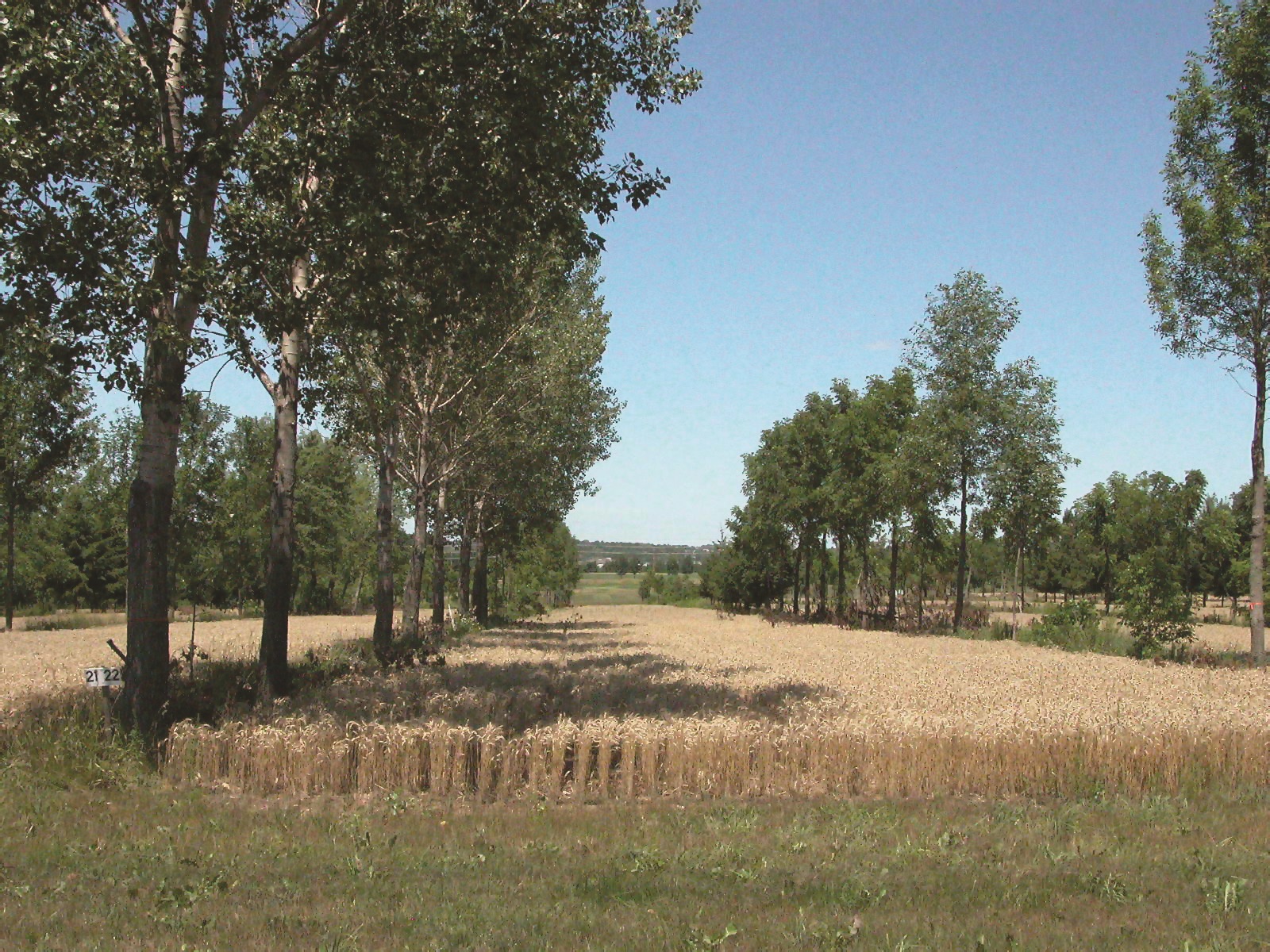
Intercropping is the practice of growing two or more crops at the same time on the same area. Crops considered for intercropping are carefully chosen so that their mutual benefit will outweigh competition between the two.
Intercropping with trees can reduce wind and water erosion in the field. It can capture excess nutrients that crop roots miss and potentially increase yield of both the tree and crop over what would have been produced in a monoculture.
OMAFRA publication, Best Management Practices: Establishing Tree Cover, volume 2 provides information on Intercropping (pages three and five).
Alley cropping is a type of intercropping and refers to cultivating forage or horticultural crops in the alleys between 2 rows of trees. Alley cropping could be a good option for tree nut and Christmas tree growers.
Resources for more information:
Riparian buffers
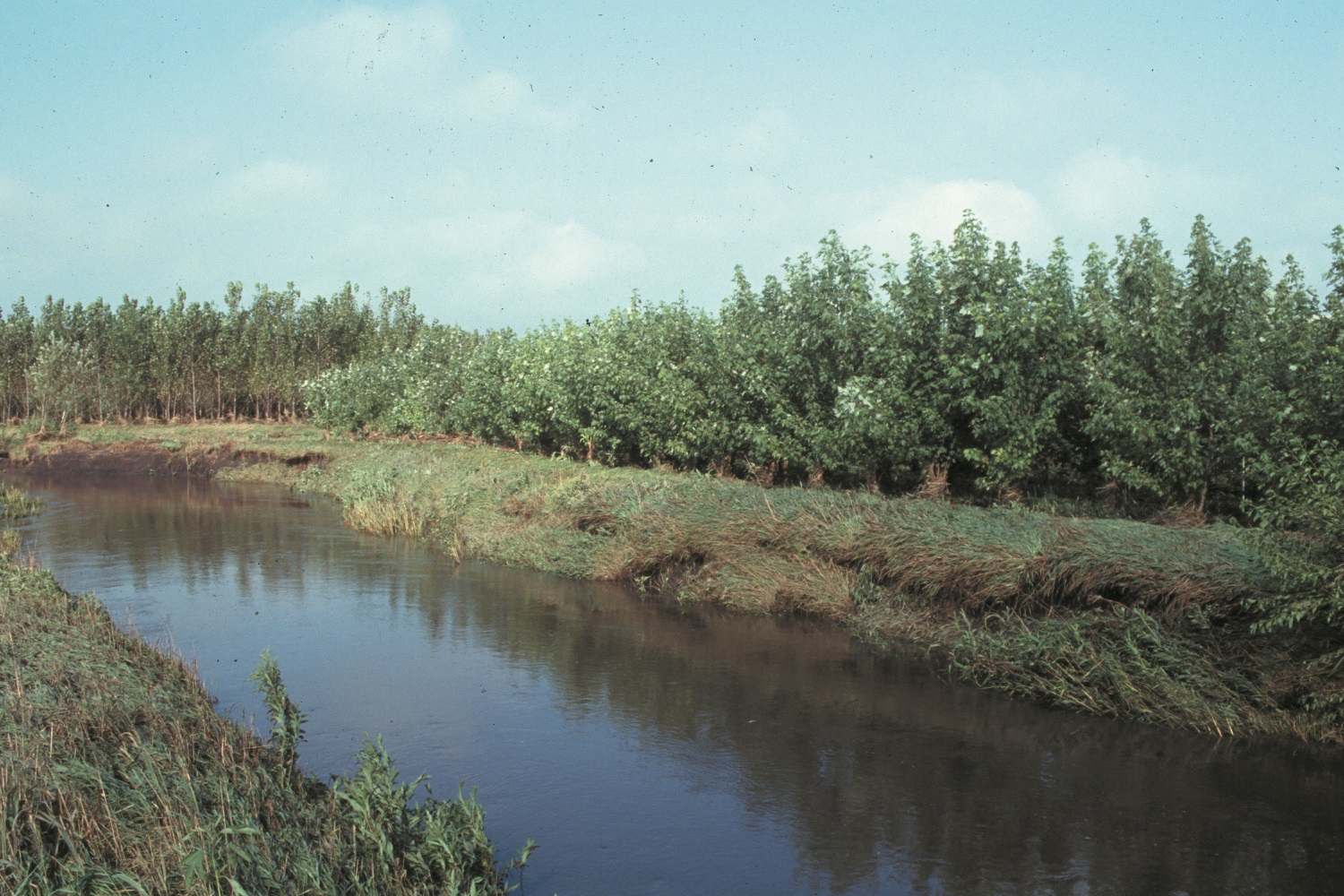
The riparian zone is the area of land next to rivers and streams. Riparian buffers are strips of grasses, trees and shrubs that are found in the riparian zone that protect the water quality. These buffers play an important role in mitigating nutrient leaching and poor water quality.
Some benefits of riparian buffers include:
- filtering out sediments, contaminants and bacteria that would otherwise enter the stream through wind or water erosion
- absorbing excess nutrients that leach or run off from nearby fields, preventing them from entering the stream
- providing shade to keep waters cool, which is critical for fish-bearing habitat downstream
- providing habitat for many species of wildlife, including insects, which are an important food source for fish
- preventing livestock from overgrazing in sensitive areas, which could lead to erosion and water quality problems
The Cataraqui Region Conservation Authority and Muskoka Watershed Council provide some guidance on establishing and maintaining riparian buffer areas.
Forest farming
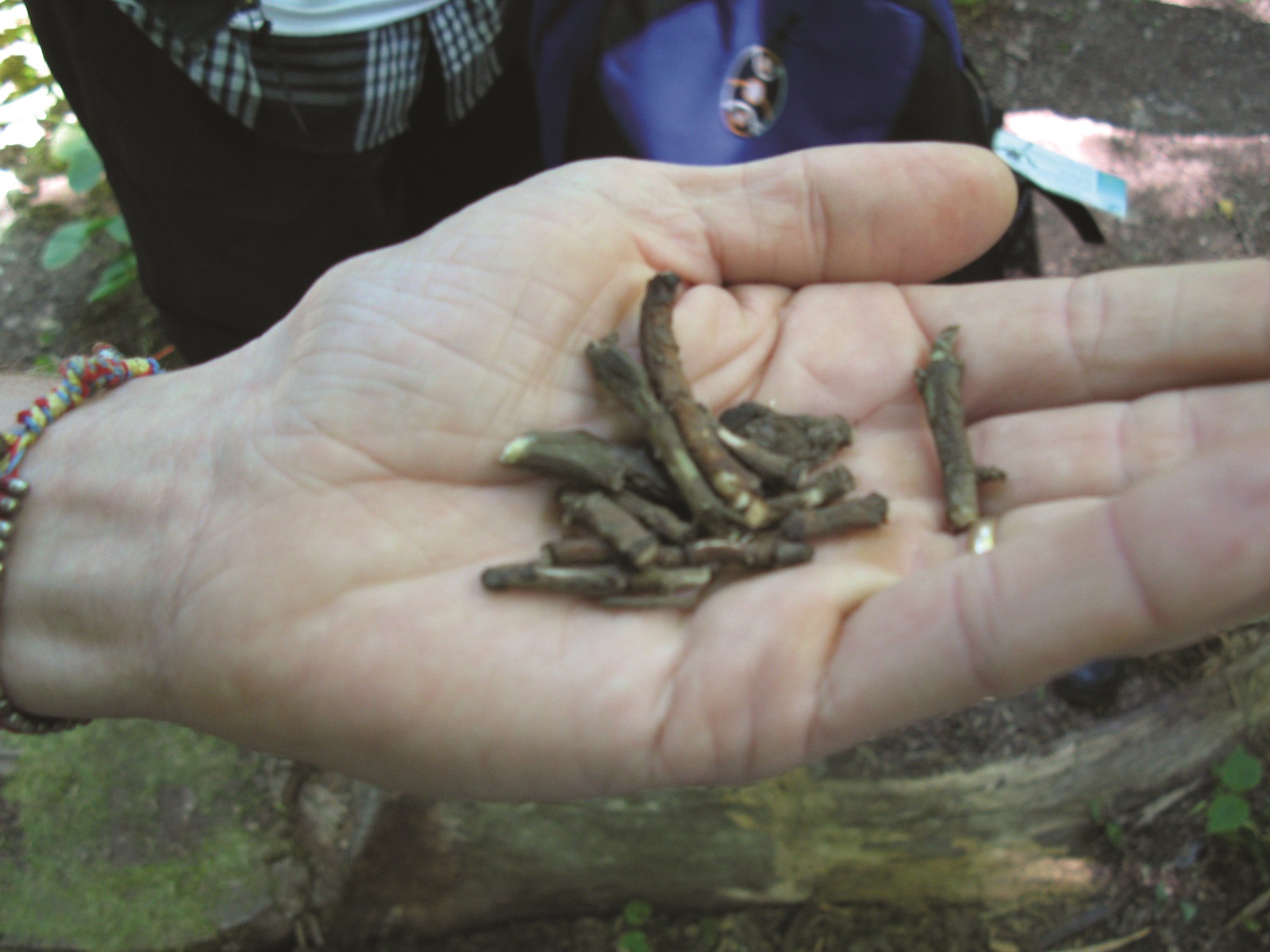
Forest farming is the cultivation of edible, decorative or medicinal crops beneath managed woodlands. Like other agroforestry systems, forest farms are managed for production of both the understory crop and wood. Ontario woodlot owners and maple syrup producers may find profitable opportunities in forest farming.
OMAFRA publication, Best Management Practices: Establishing Tree Cover, volume 2 provides information on forest farming (pages 5 and 7).
Learn more about Forest Farming from the United States Department of Agriculture, including videos.
Silvopasture
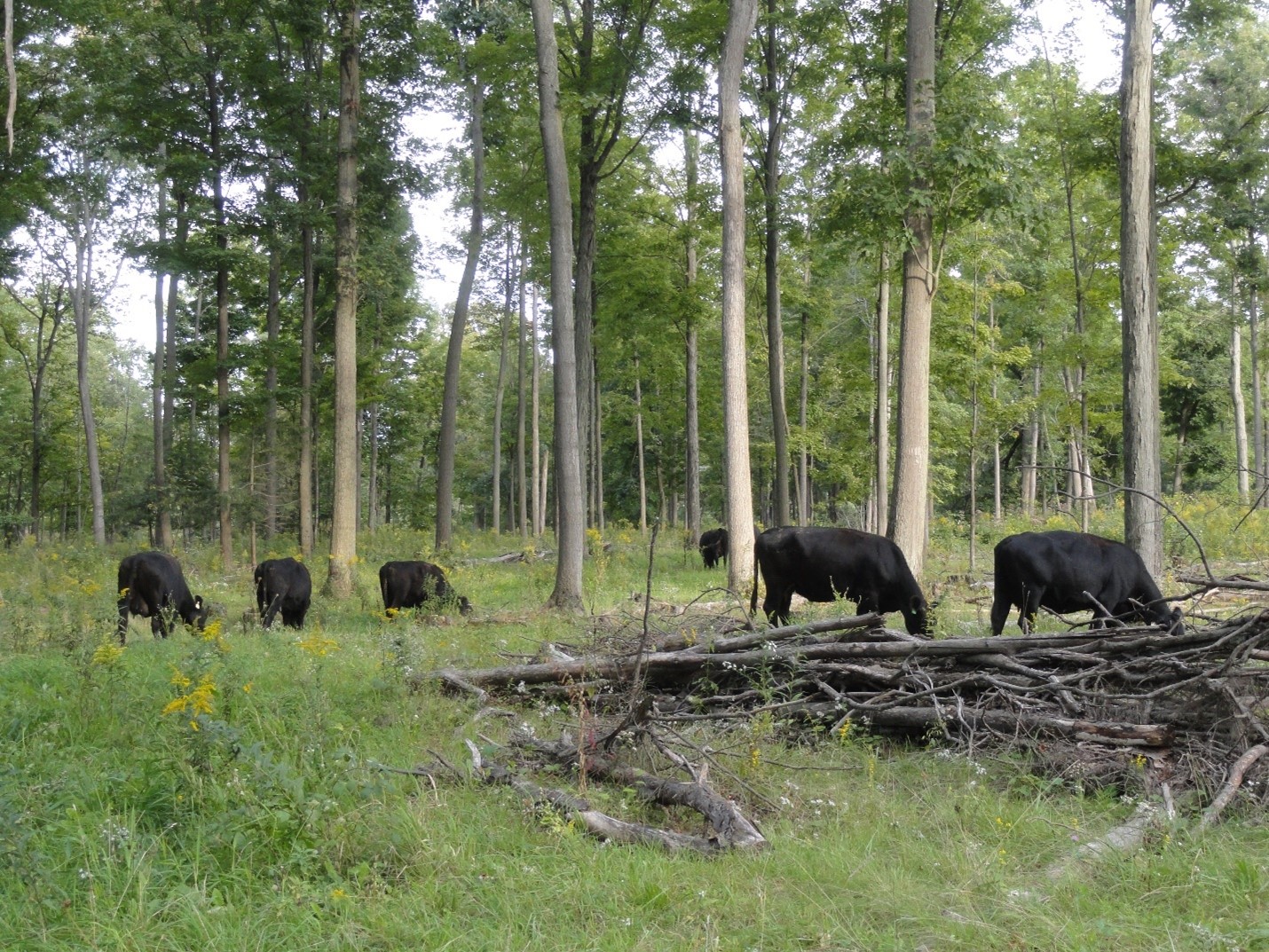
Silvopasture is the practice of incorporating livestock onto your tree farm, plantation or orchard, to obtain multiple different yields from forested or treed land. As with any other agroforestry system, silvopasture must be carefully planned and animals well matched to the land type in order to build a system with net positive benefits for both trees and animals.
Do not practice silvopasture in tree nut orchards, as food safety issues may be a concern. Sensitive areas such as wetlands and healthy, maturing hardwood forests should also be avoided.
OMAFRA publication, Best Management Practices: Establishing Tree Cover, volume 2 provides information (pages 1 and 5).
Cornell University provides information on Six Key Principles for a Successful Silvopasture.
More information is available from the Association for Temperate Agroforestry.
Biomass production
The term biomass in agroforestry refers to non-food plants (including trees) that may be used as fuel and other industrial bio-based products. Biomass production uses fast-growing trees and plants that can generate high volumes of plant matter in relatively short periods of time. Hybrid poplar and willows are good trees to use for biomass production, as they require less time to grow than many other tree species.
Willow trees in particular have been shown to work well in riparian areas; they provide high biomass yields while providing environmental benefits such as erosion control and nutrient interception.
The OMAFRA fact sheet, Biomass Burn Characteristics outlines the physical and chemical characteristics of solid biomass fuels, explains their significance and includes a table containing detailed information on the properties of 22 common biomass fuels in Ontario. For detailed information on biomass refer to renewable energy on the farm.
Examples of trees used for biomass production:
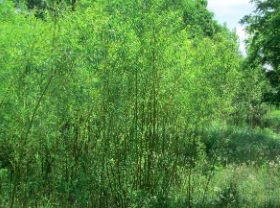
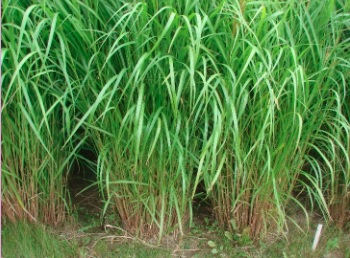
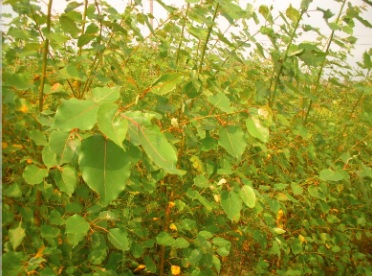
Windbreaks
A windbreak is a planting, usually made up of one or more rows of trees, to provide a barrier to reduce or redirect wind.
Windbreaks provide many useful functions:
- reduce odour, noise and dust from farm operations
- protect topsoil from wind erosion during periods where soil is exposed
- slow down winds to protect field crops, fruits and vegetables
- improving yields and increasing profitability by preventing fruit drop, tree hardening off, and bruising and scarring
- provide shelter for honeybees and other pollinating insects
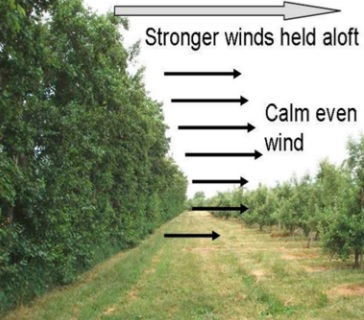
A properly designed windbreak will allow adequate air circulation in the crop, while diverting strong damaging wind up and over the windbreak tree row. The protected area in the crop zone will extend downwind approximately ten to fifteen times the height of the windbreak trees.
Establishing windbreaks
Conifers are generally preferred for windbreaks around farm fields, although deciduous trees can provide shelter. Conifers are narrow and occupy less ground space, while deciduous trees tend to have wider spreading canopies and can be aesthetically pleasing.
Note that tree recommendations from forestry sources, such as Conservation Authorities, may limit the choice of trees to native species. If you choose to use non-native species, ensure that they will not spread as invasive or destructive plants into the environment.
The Best Management Practices: Field Windbreaks provide an overview of what is involved in designing, planning, establishing and maintaining field windbreaks. Your local conservation authority is a good source of information on varieties and tree planting.
Learn from producers who have established windbreaks by reading windbreak establishment case studies.
White spruce, eastern white cedar and white pine are examples of native conifers. Non-native conifers, such as Norway spruce, Colorado blue spruce, Serbian spruce, Austrian pine and Scotch pine are effective windbreak trees. Colorado blue spruce and Austrian pine have a natural thick coating of wax on their needles, making them drought tolerant and tolerant to winter road salt spray along highways, offering protection for salt-sensitive orchard trees, such as apples and peaches.
Several tree and crop combinations should be avoided. Avoid planting trees of white pine near crops of red or black currant as both are co-hosts of white pine blister rust disease, lethal to white pine. Similarly, juniper and apples should not be combined to prevent cedar-apple rust disease. Walnut trees exude a natural herbicide called juglone, which will kill sensitive crops, such as apples and tomatoes where roots contact each other. OMAFRA fact sheet, Walnut Toxicity, provides a list of crops affected by the toxin.
Roots of poplar, soft maple and other wet-site species can plug underlying perforated drainage tiles. Be careful not to plant trees where roots can plug tile drains. OMAFRA fact sheet Farm drainage systems and tree roots provides advice on how to avoid damage to drains.
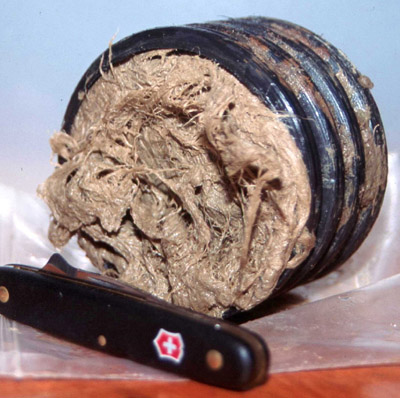
A single row of trees having some diversity of species will be relatively easy to manage. For example, three to five tree species, such as white cedar, spruce and pine can create a healthy diverse windbreak. Every season can vary from wet to dry and mild to hot. Some trees will perform better or stress more than others through the variety of weather conditions experienced over the years.
A single row of trees will also be accessible on both sides by a mower or herbicide sprayer, which simplifies annual maintenance of weeds. Annual maintenance can maintain windbreak trees in good condition while preventing the establishment of invasive or nuisance species, such as buckthorn, wild grapes or alternate hosts of insect pests and diseases that can infest windbreaks.
In the first year of tree growth, watering and refill planting are necessary to establish an effective windbreak. Watering the windbreak in the first year is critical because the trees are establishing new roots. Second- and third-year watering should still be considered, especially during very dry summers. After the third year, the root system should be developed enough to support the tree in drought conditions.
It is important to assess the amount of tree growth and survival a year after the windbreak is planted. Assessing the tree survival rate can help decide if refill planting is needed. Leaving large gaps allows excessive winds to pass through the windbreak, which can damage crops and erode soil. Refill planting will bring the density of the windbreak back to 100% by filling any gaps left by dead trees from the first growing season.
Maintaining windbreaks
Healthy, productive windbreaks require maintenance to help prolong their life and effectiveness.
Planting windbreaks into ground covers (for example winter wheat under seeded to Dutch white clover) reduces maintenance costs and weed pressures in the windbreak area and makes future mowing easier. Mowing several times a year up to 3 years after the windbreak is established helps to reduce the number of weeds that compete for moisture, nutrients and sunlight.
Mowing late in the fall can reduce winter rodent habitat. This is especially important when trying to establish a hardwood windbreak because rodents will remove bark in the winter months, putting the tree's health at risk. Removing easy rodent habitat makes it easier for predators, such as hawks and foxes, to find their prey.
Controlling weeds with herbicides can prevent weeds and grass from growing around the trees. Herbicide application is recommended 2 to 3 times in the first three years after the windbreak is planted. Farmers can decide if herbicide treatment, including spot or band spraying, is necessary for their trees after the first year of growth.
Pruning is another form of maintenance. Pruning of hardwood windbreaks enhances the structure of the trees and is necessary for the development of future harvestable wood products. It also results in a more effective windbreak. Pruning can provide clearance for farm equipment and improves the longevity of the windbreak. Make a pruning and thinning plan before you cut your trees.
It is better to prune regularly rather than infrequently. Infrequent pruning places a lot of stress on trees, often resulting in slow growth and windbreak development.
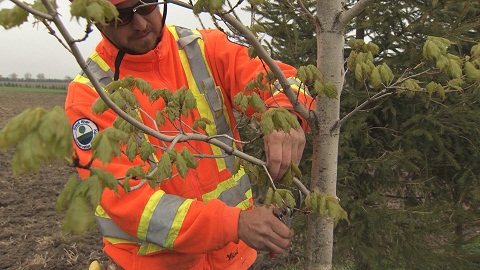
Thinning after ten years of growth may be necessary to maintain crop and soil protection, or to develop harvestable wood products. Thinning also helps to create a more effective shelter zone on either side of the windbreak, reducing the effects of wind up to 10 times the height of the tree.
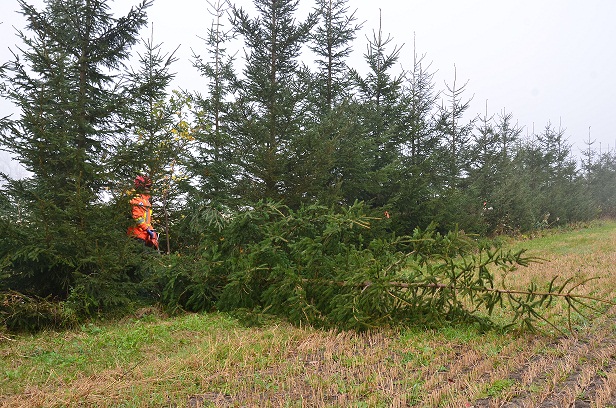
Windbreak maintenance tips
- During summer drought conditions, watering every 2 to 3 weeks is considered adequate for new trees. Over watering can be harmful as it may create shallow root growth.
- Fertilizers are not recommended for use in a windbreak. The nutrients will be taken up by the weeds and grass, creating growth competition for new trees.
- Mow the vegetation around the trees for the first three years after a windbreak is planted.
- A mixture of wheat and white clover are ideal ground covers for around the trees. The wheat grows taller and protects the young trees, and the clover provides great ground cover and moisture retention.
- Wait a few years after the tree is planted before pruning. Pruning a tree when it is too young can "shock" it.
- It is easier to make frequent minor pruning cuts, such as yearly, than to make major cuts, such as once a decade.
Windbreak videos
After careful planning, many farmers have established windbreaks. The videos provide a collection of success stories and ideas on what to do and what to avoid. These videos will take you through the process of planning, planting and maintaining a windbreak.
- Multifunctional windbreaks: planting
- Multifunctional windbreaks: benefits and planning
- Multifunctional windbreaks: maintenance
- Multifunctional windbreaks: success stories
Managing trees on farms
The Best Management Practices booklets Agroforestry Series Volume 1 – Woodlot Management, Agroforestry Series Volume 2 – Establishing Tree Cover provide detailed information for managing woodlots and establishing tree cover.
Maple syrup production
Maple syrup is an important industry in Ontario. The total value of maple products produced in Ontario was over $26.5 million in 2019. Our climate and soils support maple forests from the southwestern most tip of Ontario to the North shore of Lake Superior. There are over 3,000 maple syrup producers, ranging from large-scale commercial operations with tens of thousands of taps to small hobby operations with a few hundred taps.
Maple syrup season usually begins in January or February with producers performing calibrations, repairs and final cleanup on their equipment. Some producers use technologies such as vacuum lines, reverse osmosis machines, stainless steel evaporators and filter presses. The Technical Standard and Safety Authority (TSSA) recently approved the use of oil-fired maple syrup evaporators. Smaller producers and hobbyists tend to use more traditional methods, including buckets and cloth filters.
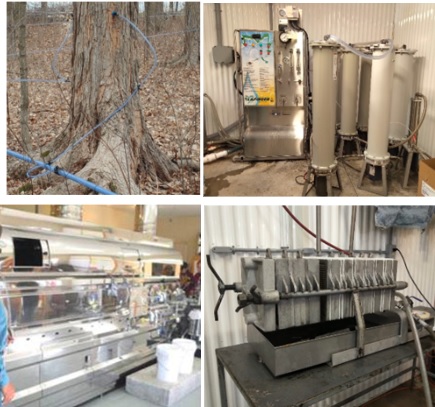
Getting started in commercial maple syrup production requires thorough planning, access to sufficient maple trees and a financial investment. Resources to help you plan and manage your maple syrup production are available from:
- Ontario Maple Syrup Producers’ Association
- Centre ACER, Quebec
- Cornell Maple Program, Cornell University, US
- Proctor Maple Research Centre, University of Vermont, US
Requirements are much simpler for hobbyists who intend to produce syrup for personal use only and not for sale. Some good resources include ONmaplesyrup (blog) and maple syrup production for the beginner, PennState Extension, US.
A commercial syrup producer may focus primarily on providing bulk syrup or granulated sugar to packers. Producers who prefer farm gate sales, value-added products, pancake houses, sugar bush tours, entertainment activities and demonstrations often invest in museum-quality displays that celebrate the historical values, artistic and past traditions of making maple syrup.
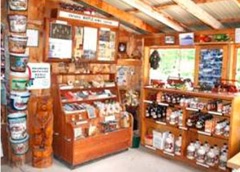
Food safety
Using food-grade equipment is a must for both commercial and hobby syrup producers. Modern best practices of food safety are also expected of commercial producers and packers.
Food safety articles on the following topics can be found on ONMapleSyrup.ca:
- Food grade and non-food grade materials
- Testing equipment for lead
- Managing mould
- Traceability and lot/batch codes
More resources:
- Maple syrup monitoring program and results
- Regulatory requirements for maple syrup in Ontario
- Preventing mould growth in maple syrup in Ontario
- Premises and food grade material requirements for producing maple syrup in Ontario
- Production lot codes for maple syrup in Ontario
- Density testing for maple syrup in Ontario
- Prevent lead contamination in maple products
Resources
OMAFRA: